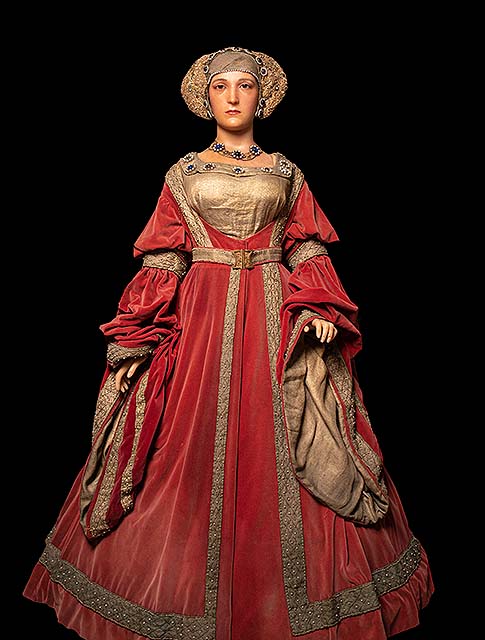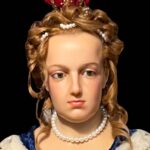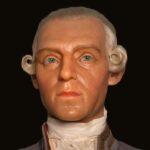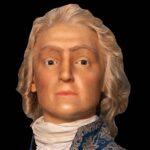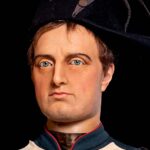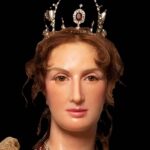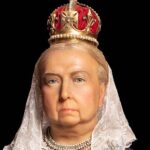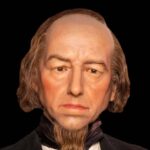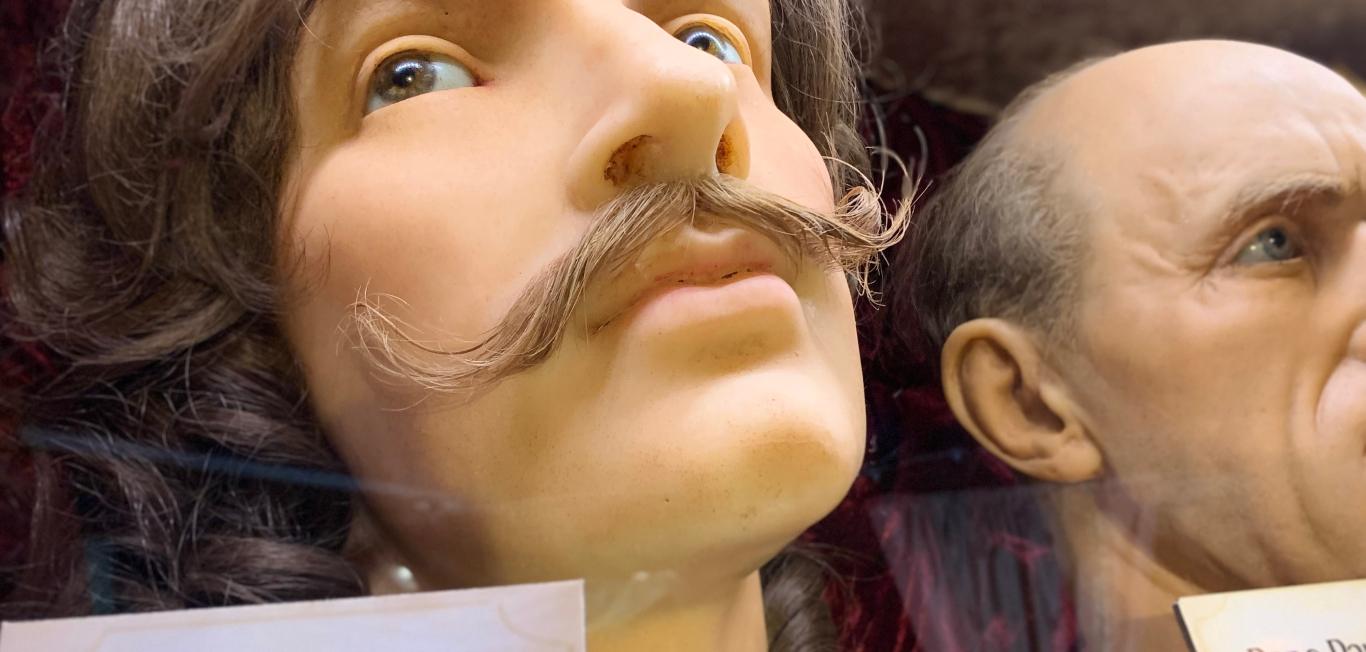About Catherine Parr
Born around 1512, was the sixth and final wife of King Henry VIII of England. A resilient and intelligent woman, Parr played a crucial role in the Tudor court during a tumultuous period in English history. Before her marriage to Henry VIII in 1543, Parr had been twice widowed and was known for her intellectual pursuits and religious convictions.
Catherine Parr is often recognized for her influence on the education of Henry’s children, particularly the future Queen Elizabeth I. She was committed to excelling in the education of both her stepchildren and other young members of the court. Additionally, Parr was a prolific writer and translator.
One of Parr’s notable works is her book “The Lamentation of a Sinner,” where she explores her personal spirituality and religious beliefs. Her writings reveal a woman of depth and complexity navigating the political and religious challenges of her time.
As the queen consort, Catherine Parr also played a diplomatic role, fostering alliances and managing the complexities of Henry VIII’s court. Her marriage to Henry ended with his death in 1547, and Parr later married Thomas Seymour, Baron Seymour of Sudeley. Unfortunately, she died shortly after giving birth to her only child, leaving behind a legacy as an educated and influential queen who navigated the complexities of the Tudor court with grace and intellect.
Early Life
Catherine Parr, born in 1512, possibly in August, belonged to a prominent northern family with roots tracing back to John of Gaunt, the third son of King Edward III. The exact date of her birth remains uncertain, although there has been some debate. Initial beliefs suggested she was born at her father’s castle in Westmorland, but modern historians challenge this assertion considering the courtly residence of her parents in London.
Her father, Sir Thomas Parr, held the position of the lord of the manor of Kendal in Westmorland but resided in London, particularly on the Strand. A close associate of King Henry VIII, he earned knighthood in 1509 and later assumed significant roles, including Master of the Wards. Meanwhile, Parr’s mother, Maud Green, served as a lady-in-waiting to Catherine of Aragon, King Henry VIII’s first wife. Green, an intelligent and educated woman, became the queen’s favorite and, often cited as Catherine Parr’s godmother, is believed to have inspired Catherine’s name.
DID YOU KNOW?
Parr's mother, Maud Green, served as a lady-in-waiting to Catherine of Aragon. It is believed to have inspired Catherine's name.
As the eldest of three siblings (William Parr, 1st Marquess of Northampton, and Anne Parr, Countess of Pembroke), Catherine Parr grew up surrounded by familial ties. Some sources suggest she was raised in her uncle William Parr’s household. Her education commenced under her mother’s guidance, encompassing Latin, French, Italian, and scriptures. Apart from formal studies, Parr learned the intricacies of managing a noble household, needlework, music and dance. She expressed a distaste for sewing, often cited as asserting that her hands were meant for crowns and scepters, not spindles and needles. Parr thus emerged as a woman of intellectual curiosity and diverse skills shaped by her upbringing and education.
Personal Life
In 1529, at the age of 17, Catherine Parr entered into matrimony with 21-year-old Edward Burgh, the heir to Sir Thomas Burgh, 1st Baron Burgh. Despite Edward’s frail health, he served on a fieffor Thomas Kiddell and held the position of a justice of the peace. The couple initially resided in Gainsborough Old Hall under the authority of Burgh’s father. However, Parr, accustomed to a more liberal environment, found the rule of her father-in-law to be oppressive.
In 1532, Burgh gained various commissions of peace and held sessions in Kirton in Lindsey. Unfortunately, this period of relative happiness was short-lived. Parr’s mother passed away in 1532, leaving her a substantial fortune. Tragically, Burgh also succumbed to death in early 1533.
In 1534, Catherine Parr, then in her early 20s, entered her second marriage with 41-year-old John Neville, 3rd Baron Latimer, a prominent figure in the powerful Neville family. This union brought Parr the title of Lady Latimer, two stepchildren and a significant place in the north’s influential circles.
DID YOU KNOW?
Parr's mother passed away in 1532, leaving her a substantial fortune. Burgh, her husband, also succumbed to death in early 1533.
Her life took a momentous turn when, at the age of 31, Catherine Parr married the 52-year-old King Henry VIII, becoming the queen of England and Ireland. Despite any reservations she may have harbored, Parr dedicated herself to making her marriage a success. In London, she immersed herself in various matters, from fashion to jewelry.
Following Henry’s death, Catherine Parr became “the queen dowager,” and after Edward’s coronation in January 1547, she retired to Chelsea.
With her former suitor, Sir Thomas Seymour, returning to England after a prolonged overseas service, Catherine Parr, despite opposition from the Regency Council, secretly married him in May 1547. The couple settled down in Sudeley Castle in Gloucestershire. Parr’s life unfolded through multiple marriages, losses, and royal alliances, leaving an indelible mark on the complex tapestry of Tudor history.
DID YOU KNOW?
At the age of 31, she married the 52-year-old King Henry VIII, becoming the queen of England and Ireland.
Interesting Facts
Catherine Parr, possibly named after Catherine of Aragon, possessed a remarkable linguistic aptitude, likely being fluent in French, Italian, and Latin. Notably, she emerged as the most influential female figure in Elizabeth I’s life, leaving a lasting impact on the future queen. Parr holds the distinction of being the first woman in England to publish a book under her own name.
Despite her influence, Catherine Parr experienced adversity and was held hostage during the Pilgrimage of Grace. In a controversial move, she married without the council’s permission just months after Henry VIII’s death, raising eyebrows.
Catherine Parr’s life was marked by several marriages, a notable fact reflecting the complexities of her personal journey. In total, she entered into matrimony four times, making her one of the most-married queens in English history. Her marriages included unions with Edward Burgh, John Neville, Henry VIII and Thomas Seymour.
Catherine Parr left a lasting impact beyond the royal court. She actively promoted education for women and played a pivotal role in the intellectual development of her stepchildren, notably the future Queen Elizabeth I. Parr’s commitment to learning extended to her literary contributions, including the publication of “Prayers or Meditations” and her involvement in translating work by the renowned humanist Desiderius Erasmus.
Her burial site is unique, as her grave is the only queen of England’s on private land, adding an air of mystery and exclusivity. The life of Catherine Parr unfolded as a tapestry woven with linguistic prowess, influential relationships, religious impact and intriguing mysteries that continue to capture historical fascination.
DID YOU KNOW?
She played a pivotal role in the intellectual development of her stepchildren, notably the future Queen Elizabeth I.
Achievements
Catherine Parr ascended to the position of queen of England and Ireland, marking a historic milestone as the first English queen consort to hold the title of queen of Ireland. This title was adopted by Henry VIII, and Parr held this distinction as part of her royal identity.
In 1545, Catherine Parr made a significant literary contribution by publishing “Prayers or Meditations,” a compilation of vernacular texts designed for personal devotion. This publication followed an earlier anonymous work titled “Psalms or Prayers” and gained considerable popularity among 16th century English readers. Notably, Parr’s literary efforts played a role in shaping the emerging Church of England.
Beyond her literary achievements, Catherine Parr wielded remarkable influence over the education of young girls, molding their inherent intellect into a formidable force. Her dedication to education left an indelible mark, contributing to the intellectual development of those under her tutelage. Parr’s multifaceted contributions as queen consort encompassed not only her royal title but also her literary endeavors and influential role in shaping educational landscapes.
Later Years
She experienced a combination of personal triumphs, challenges, and political complexities. Following the death of Henry VIII in 1547, Parr assumed the title of queen dowager and entered into a swift marriage with Thomas Seymour, a man she had known since her youth. This remarriage was notable for defying traditional expectations for widowed queens, and Parr’s choice to marry again reflected her independent spirit.
Catherine Parr’s intellectual pursuits continued during this period. She maintained an interest in ideas of the Protestant Reformation and commissioned translations of religious texts. Her literary engagement was not confined to her earlier years, as she remained committed to scholarly and intellectual pursuits even after her time as queen consort.
The political landscape was not without challenges for Catherine Parr. Her marriage to Thomas Seymour sparked some controversy, and their union faced opposition from the Regency Council due to its timing so soon after the death of King Henry VIII. Despite these challenges, Parr and Seymour married in secret in May 1547.
In the later part of her life, Catherine Parr faced the demands of motherhood. In 1548, she gave birth to her only child, a daughter named Mary. Tragically, this joyous occasion marked the beginning of the end for Parr. The complications of childbirth likely led to her contracting puerperal fever, a dangerous infection that claimed the lives of many in the Tudor era.
Catherine Parr’s untimely death occurred in September 1548, just days after giving birth. She passed away at the age of 36, leaving behind a legacy that extended beyond her role as queen consort. Her intellectual contributions, commitment to education, and resilience in the face of personal and political challenges marked her later years as a continuation of the dynamic and influential life she led in the complex tapestry of Tudor history.
DID YOU KNOW?
In 1548, she gave birth to her only child. Tragically, the complications of childbirth likely led to her contracting puerperal fever, a dangerous infection that claimed the lives of many in the Tudor era.
FAQs
How old was Catherine Parr when she married Henry VIII?
Catherine Parr married Henry VIII when she was in her early 30s, specifically around the age of 31.
What was unique about Catherine Parr?
What was unique about Catherine Parr was her position as the sixth and final wife of Henry VIII. She was not only a queen consort but also a woman of intellectual prowess, being the first queen in England to publish a book under her own name. Parr’s commitment to education, her multilingual abilities, and her influence on ideas of the Protestant Reformation set her apart.
What did Catherine Parr do as a queen?
As a queen, Catherine Parr played a significant role in the education of Henry VIII’s children, particularly Queen Elizabeth I. She fostered learning and commissioned translations of religious texts. Parr’s diplomatic skills were evident in her role as queen consort, and her influence extended to matters of state.
What is the legacy of Catherine Parr?
The legacy of Catherine Parr lies in her intellectual contributions, literary achievements, and influence on education. She left an indelible mark as a queen consort who navigated the complexities of the Tudor court, promoting learning and embracing ideas of the Reformation. Parr’s writings and dedication to education shaped her legacy as a learned and influential figure in the historical tapestry of England.
